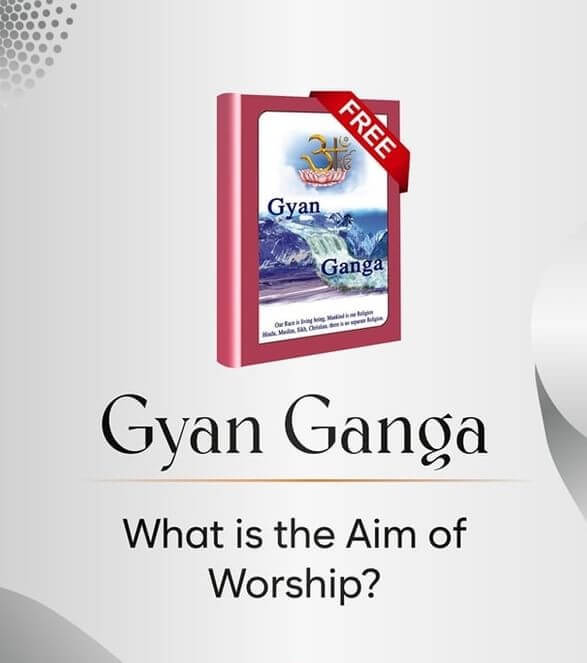Is God in Form or Formless?
Help & Information / Is God in Form or Formless?
Is God in Form or Formless?
The debate about whether God is in form or formless has been a point of confusion for spiritual seekers across the world. According to Gyan Ganga, a sacred text that reveals true spiritual knowledge, God is not formless—He has a definite form. This revelation challenges the popular belief that God is only formless or exists merely as an all-pervading energy.
The text clarifies that while many spiritual traditions emphasize God as formless (Nirgun), the Supreme God, Kabir (KavirDev), indeed has a visible and tangible form. He exists in His divine abode, Satlok, in a human-like form, and this is His eternal state.
God Is in Form
In Gyan Ganga, it is explicitly stated that God has a form—He is not just an abstract force or energy. The Supreme God Kabir, who created the entire universe, has a physical appearance. This form is divine, eternal, and free from the limitations of the material world. Kabir manifests in human form to guide and liberate souls trapped in the cycle of birth and death, and His form remains unchangeable in His eternal abode, Satlok.
Scriptural References Supporting God’s Form
- Rigveda (Mandala 9, Sukta 96, Mantra 17): This verse describes God’s appearance in a tangible form, descending as a weaver to impart true knowledge. This clearly refers to Supreme God Kabir, who came to earth to lead humanity towards salvation.
- Holy Gita (Chapter 7, Verses 24-25): Lord Krishna acknowledges that while the Supreme God is often misunderstood as formless, He does indeed have a divine form that many cannot perceive. This further supports the view that God is not merely an invisible force.
- Kabir Sagar: In this text, which records the teachings of God Kabir, it is stated that Kabir has a form, resides in Satlok, and is visible to His true devotees. His divine form surpasses the limitations of the material world and is not subject to birth or death.
- Holy Quran: The Quran hints at God's interaction with humans, which implies that He possesses a form that can communicate with His devotees. Although God is often referred to as beyond comprehension, He is not formless.
Misconception of the Formless God
Gyan Ganga explains that the common belief in a formless God is a misunderstanding propagated by Kaal Brahm, the deceptive power that rules the 21 universes. Kaal Brahm encourages the belief that God is only formless to keep souls trapped in the material world. Most beings, including many religious scholars, fail to realize that the Supreme God Kabir has a visible form, and worshipping Him in this form is essential for attaining salvation.
Supreme God Kabir's Manifestations in Form
The text provides ample evidence that God Kabir manifested in a human-like form on earth more than 600 years ago to guide humanity. Appearing as a weaver, Kabir Sahib lived a simple life while imparting the highest spiritual wisdom. Many mistook Him for an ordinary man, but His divine actions and teachings revealed that He was the Supreme God in human form.
- Kabir Sahib’s Human Form: Despite appearing as a weaver, Kabir Sahib performed numerous divine acts and taught true spiritual knowledge, showing that He is the Supreme Being who has taken a visible form to help human beings.
Importance of Worshipping God in Form
According to Gyan Ganga, recognizing and accepting that God has a form is vital for achieving complete salvation. While many focus on the formless aspect of God, true liberation can only be attained by worshipping the Supreme God Kabir, who has a divine form. Worshipping His visible form allows devotees to establish a direct connection with Him, receive His grace, and eventually escape the cycle of birth and death.
Conclusion: God Is Not Formless—He Has a Definite Form
In conclusion, Gyan Ganga provides clear evidence that God is in form and not formless. The Supreme God Kabir exists in a visible, divine form in His eternal abode, Satlok, and appears on earth in human form to guide His devotees. Scriptures such as the Rigveda, Holy Gita, and Kabir Sagar support this truth, dispelling the misconception that God is formless. Recognizing this form-based nature of God is essential for attaining complete spiritual knowledge and salvation.
← Whom do Brahma, Vishnu and Shiv Worship Which God wants Humans to remain in the Cycle of Birth and Death →
